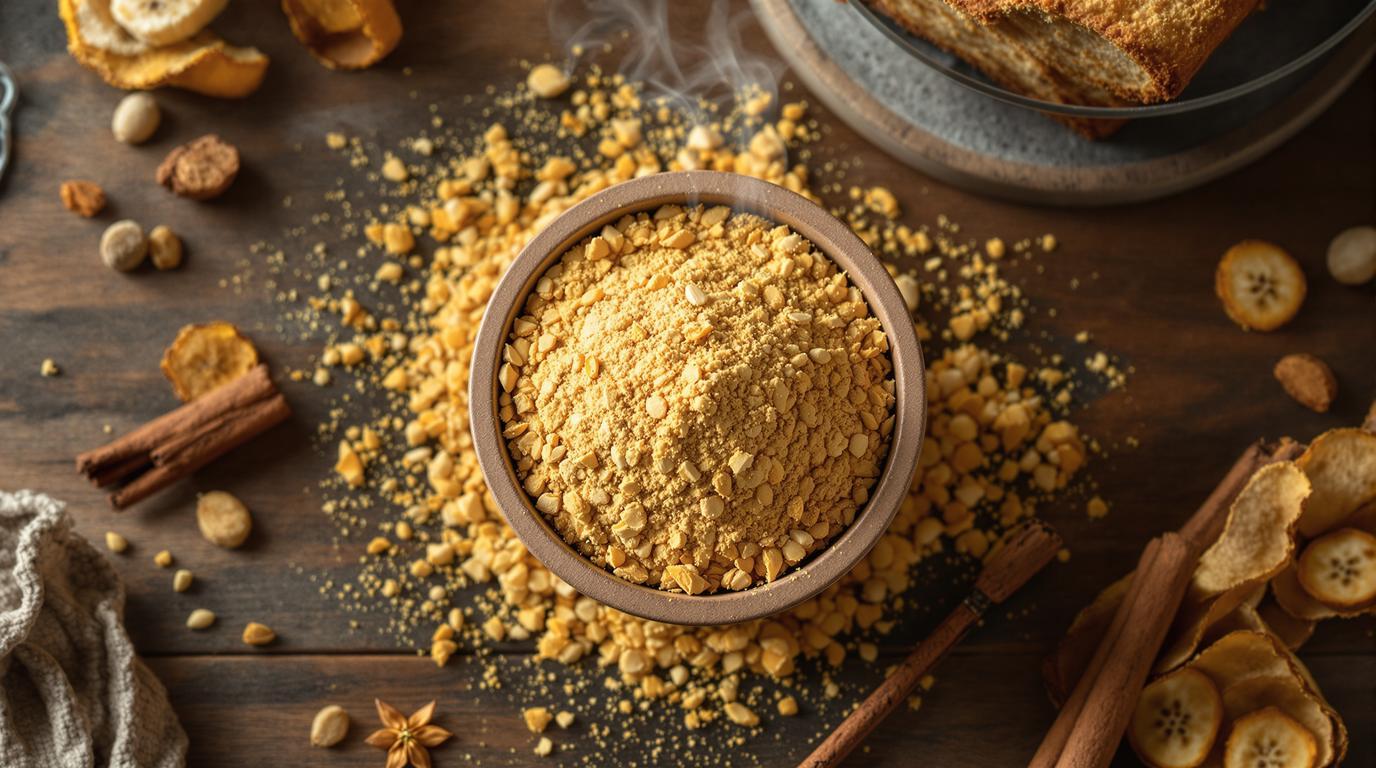When I was a young chef at my first restaurant job in San Francisco, I watched in amazement as our pastry chef transformed what most people threw away into culinary gold. “In my grandmother’s kitchen,” she told me, “nothing went to waste.” That wisdom stuck with me, especially when I discovered the incredible versatility of banana peels. Today, I’m sharing how to transform those often-discarded peels into a nutrient-rich flour that adds both flavor and nutrition to your baking. This zero-waste technique bridges traditional wisdom with modern sustainability practices—something my culinary mentors would certainly approve of.
The Story Behind Banana Peel Flour 📖
While using whole bananas in recipes like Depression-era banana bread has long been practiced, transforming just the peels into flour is a modern adaptation of traditional zero-waste cooking. In South Asian kitchens, banana peels have been treasured ingredients for generations, often appearing in dishes like Banana Peel Subzi and Banana Peel Curry. This flour takes that sustainability philosophy and adapts it for contemporary gluten-free baking.
Essential Ingredients 🧾
- 4-5 large organic banana peels (ripe for milder flavor, green for more resistant starch)
- Water for boiling (approximately 6 cups/1.5 liters)
- 1-2 teaspoons lemon juice (optional, helps reduce bitterness)
Chef’s Note: Organic peels are non-negotiable here. Conventional banana peels may contain pesticide residues that you definitely don’t want in your food. If organic isn’t available, this recipe isn’t the right choice—perhaps try my Banana Peel Chocolate Chip Muffins instead, which uses a different preparation method.
Step-by-Step Instructions 📝
- Prepare the peels: Thoroughly scrub banana peels under cool running water to remove any dirt or residue. Trim off the woody stem end and any brown spots.
- Pre-cook to reduce bitterness: Place peels in a pot with enough water to cover them completely. Bring to a boil and simmer for 5-10 minutes until slightly softened. This crucial step removes the natural bitterness. Drain thoroughly.
- Slice thinly: Once cool enough to handle, cut the peels into thin strips about ¼-inch (6mm) wide. The thinner they are, the faster and more evenly they’ll dry.
- Dehydrate: Arrange the strips in a single layer on dehydrator trays (or on parchment-lined baking sheets if using an oven). Dry at 115°F (45°C) for 6-8 hours until completely brittle and snap when bent—they should have the texture of dried leaves. In an oven, use the lowest setting with the door slightly ajar.
- Grind into flour: Once completely dry, pulverize the peel strips in a spice grinder, coffee grinder, or high-powered blender until you achieve a fine powder. Work in small batches for the most consistent texture.
- Sift: Pass the ground powder through a fine-mesh sieve to remove any larger pieces and ensure a consistent texture.
Chef’s Secret Techniques 🤫
The secret to exceptional banana peel flour lies in post-processing. After grinding, I lightly toast the flour in a dry skillet over medium-low heat for 2-3 minutes, stirring constantly. This develops a nutty aroma that beautifully complements baked goods. Just be careful not to burn it—once you smell that toasty fragrance, immediately transfer to a cool container.
For storage, keep your banana peel flour in an airtight container in a cool, dark place for up to 3 months, or extend its shelf life to 6 months in the refrigerator. The natural oils can go rancid if stored improperly, so proper storage is essential.
Serving & Presentation Tips 🍽️
Banana peel flour works beautifully when substituted for 25-50% of conventional flour in recipes. I’ve found it pairs exceptionally well with warming spices like cinnamon, nutmeg, and cardamom. Try incorporating it into pancakes, muffins, or quick breads. The slight mineral notes and subtle banana flavor enhance spicy preparations as well as sweet applications.
For gluten-free baking, combine banana peel flour with other alternative flours like almond, rice, or buckwheat. Add 1/4 teaspoon xanthan gum per cup of flour blend to improve binding properties.
Remember that this journey from peel to flour isn’t just about creating an ingredient—it’s about connecting with a philosophy of resourcefulness that stretches across cultures and generations. Each time I make this flour, I think of my mentor’s grandmother and countless other clever cooks who found delicious purpose in what others overlooked. Your kitchen scraps aren’t trash; they’re just ingredients waiting for a second chance to shine. ✨
